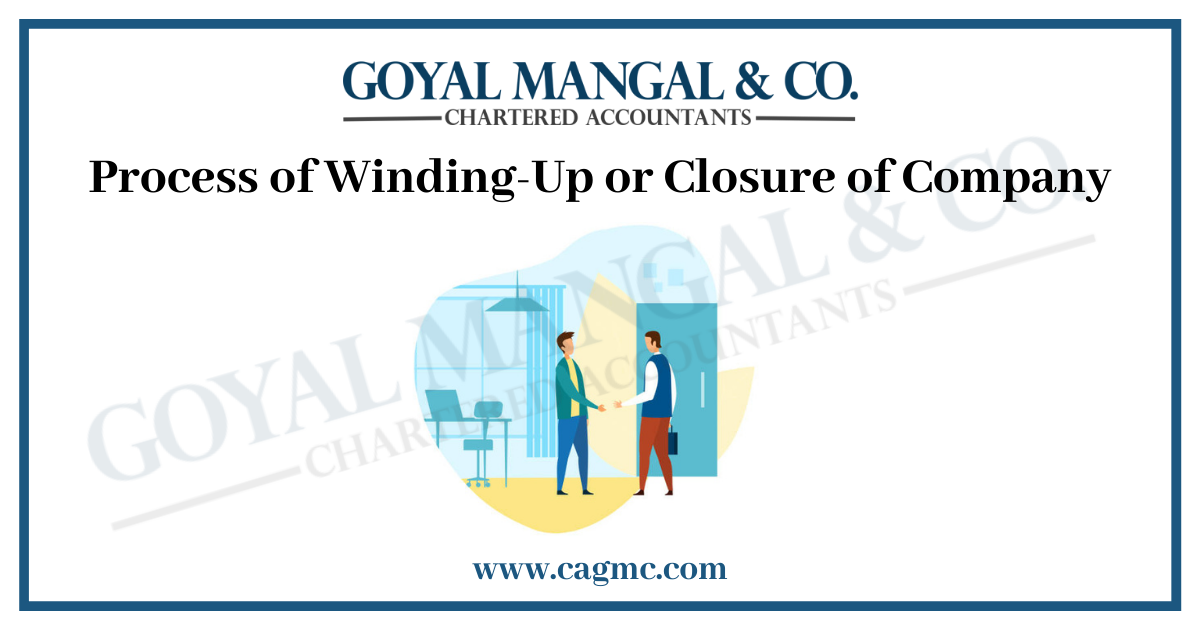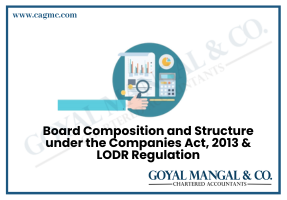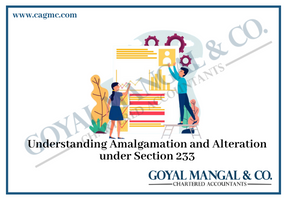
Creation of the corporation takes place as per the legal provisions bestowing it a “separate legal entity” and perceiving it as an “artificial person”. Existence of such an artificial person could only be ended legally. Therefore, winding up refers to legal proceedings of terminating the existence of the company. It puts a full stop to the life and operations of the company.
After the closure of the company, its properties would be used in a manner to benefit the members and the creditors out of it. The appointment of the Liquidator aids the realisation of the corporation’s assets and properties. Surplus of assets, after the settlement of accounts, would be shared by the members in decided ratios.
Not only might an insolvent rather a financially sound corporation opt to wound up through the consent of the members or the creditors.
|
Table of Contents: |
Preface to Winding-Up
“Winding-Up” attributes “to the process of putting an end to the existence of the company”. Following “section 2(94A) of the Companies Act, 2013”, winding-up refers “to the liquidation under the Insolvency and Bankruptcy Code, 2016.” Thus, the closure of the company eventually results in the dissolution of the corporation.
Closure of the corporation terminates its going concern and ceases its normal business affairs. The procedure to close the corporation commences only after the approval of the court.
Winding-Up vs. Dissolution
Often, the concept of “Winding-Up” and “Dissolution of the company” are misunderstood and used interchangeably. However, there is a significant difference between them both.
| Winding-Up | Dissolution |
| First stage of the termination of the existence of the corporation. | Dissolution is the secondary stage of terminating the life span of the corporation. |
| The liquidator carries out such legal proceedings. | Dissolution does not observe any legal proceedings. |
| Creditors could prove their debts while winding up the company. | Creditors have no such benefit under dissolution. |
| A voluntary winding-up might take place. | Court’s orders are essential for the dissolution proceedings. There is no concept of voluntary dissolution. |
Techniques of Winding-up of a Company
“Section 270 of the Companies Act, 2013” specifies three modes for the closure of the Company. These are:
- Winding-up by the Court
- Voluntary winding-up
- Voluntary winding subjected to the supervision of the court.
Winding-Up by the court
The “Compulsory Winding-Up” or the “Winding-up by the court” results from the orders of the Court. The petition for the mandatory closure of the corporation would be filed in accordance with “Section 272 of the Companies Act, 2013”. Section 271 of the same act specifies the following grounds leading to compulsory closure of the corporation:
- The corporation’s Special Resolution for closure through the tribunal.
- Violation of security and integrity of India by the Company.
- The company omits to deliver the statutory reports to the Registrar and defaults in organizing the annual meeting.
- Corporation is in no position to initiate its business within one year of its incorporation or moratorium of business operations for a year.
- Reduction in member count below the statutory requirement
- Company’s inability to pay off its dues.
- Just and equitable in the eyes of the Tribunal.
- Unlikely to be revived by the Tribunal.
- Company omits to file the Balance Sheet and Profit and Loss Account or Annual Return for any five uninterrupted fiscal years.
In line with section “272 of the Companies Act, 2013” a petition for the closure could be initiated by:
- The Corporation itself through a special resolution
- The Contributories through a petition
- The Registrar
- Individuals authorized by the Central Government
Consequences of Winding-Up
Compulsory closure attracts the following consequences:
- Court notifies the official liquidator to take charge of the corporation and effectuate the closure process.
- Applicability of winding-up orders on all the claimants and contributories, irrespective of whether they filed such a petition or not.
- The appointment of the official liquidator by the Central Government.
- Submission of relevant particulars like corporation’s assets, cash & bank balance, liabilities and claimants to the official liquidator.
- Submission of a preliminary report by the official liquidator to the Court within six months from winding-up order concerning-
- Capital particulars of the Company
- Cash and other securities
- Liabilities of the Company
- Properties, both movable and immovable
- Unpaid calls and other liabilities
Voluntary winding-Up of a company
The closure occurring on the company’s own accord leads to voluntary closure of the corporation. The courts do not intervene in such proceedings. Here, the members and creditors would be independent to settle their matters without knocking on the court’s door. However, they might reach the court for directions or orders as and when required. Voluntary winding-up could further be divided into “Members’ voluntary winding up” and “Creditors’ voluntary winding up”.
| Members’ voluntary winding up | Creditors’ voluntary winding up |
| Such proceedings are initiated when the corporation could clear its dues. | Such proceedings are initiated when the corporation could not clear its dues. |
| “Declaration of solvency” filed by the director. | “Declaration of Solvency” is not filed by the Directors. |
| Liquidator appointed by the members | Liquidator appointed by the creditors |
| Members control the closure proceedings | Creditors control the closure proceedings. |
| Special resolution of the corporation sanctions the Liquidator to exercise the powers. | Court, the committee of inspection or a meeting of the creditors sanctions the `Liquidator to exercise the powers. |
“Section 304 of the Companies Act 2013” states the events in which the corporation might wound up voluntarily. These are:
- Ordinary Resolution: Corporation’s resolution enacted in its general meeting, stating to voluntarily wound up the corporation after the expiry of the fixed duration or in the event for which the articles provide that the company should be dissolved.
- Special Resolution: A special resolution does not require to state reasons for the dissolution.
Winding-up under the Supervision of the Court
The corporation could reach closure without the court’s assistance. However, such a voluntary winding up might require the court’s supervision. At any point of time after the resolution for voluntary winding up, the court might make an order that the voluntary winding up would be subjected to the supervision of the court.
During the proceedings of the voluntary winding up, any dissatisfied creditor, contributory or the liquidator might approach the court for winding up under the supervision of the court. Here, the petitioner must prove that the proceeding lacks justice and fairness to each party.
Winding-Up of an Unregistered Company
Companies Act considers a partnership or corporation including more than seven persons at the point of presentation of closure petition, to be an unregistered company. Such a corporation could get wind-up only by the Tribunal’s order. Therefore, there is no provision of voluntarily winding-up for them.
Grounds for Winding-Up
- The corporation either stands dissolved or ceases its business or is carrying the business only to wind it up.
- Corporation’s inability to pay its debts.
- It deems just and equitable to the Tribunal to wind up the company.
Conclusion
A corporation is a creation of law and could come to an end by the process of law. Such a procedure of ceasing the existence of the company is referred to as Winding-Up. In India, the closure of the company could be either by the court’s order, will of the members and creditors or with the court’s supervision.
Each procedure has its legal provisions and grounds on which the Tribunal could grant the winding-up orders. Throughout the proceedings of winding-up, NCLT or the Tribunal plays an essential part to ensure justice to each party. It undertakes all necessary steps to protect the benefits of the creditors, members and Directors. Further, it lays down the conclusive guidelines to guarantee smooth & effective proceedings by making it extremely transparent and easy.







